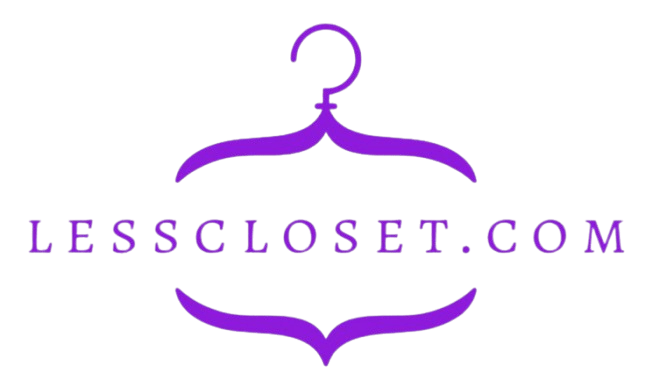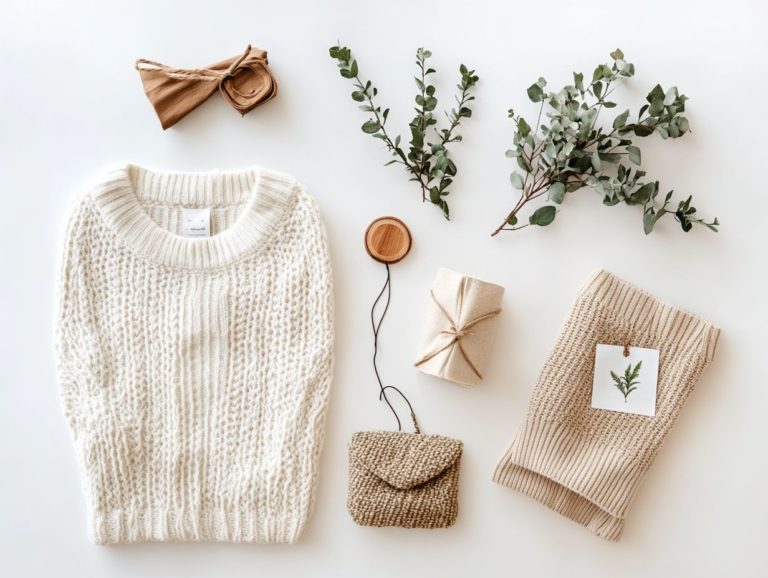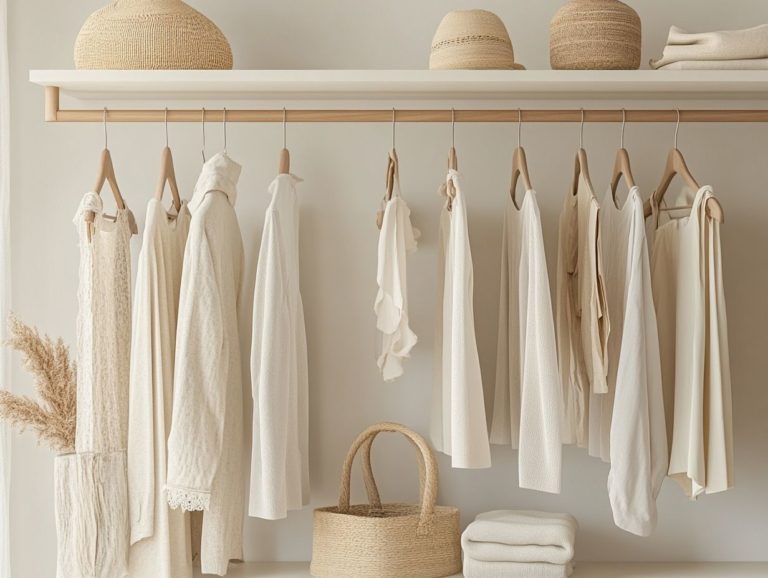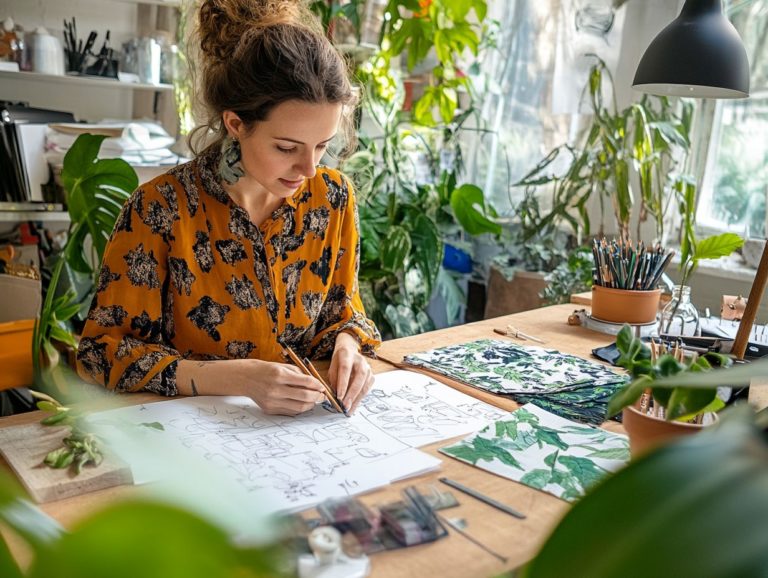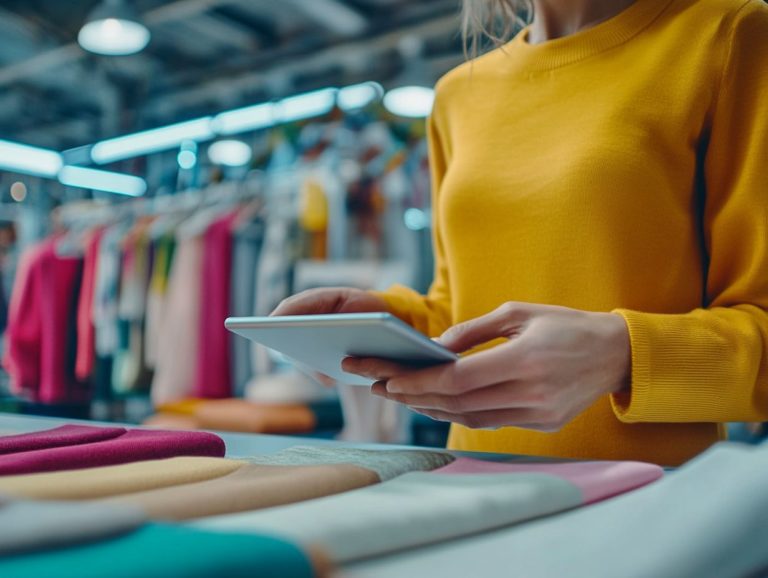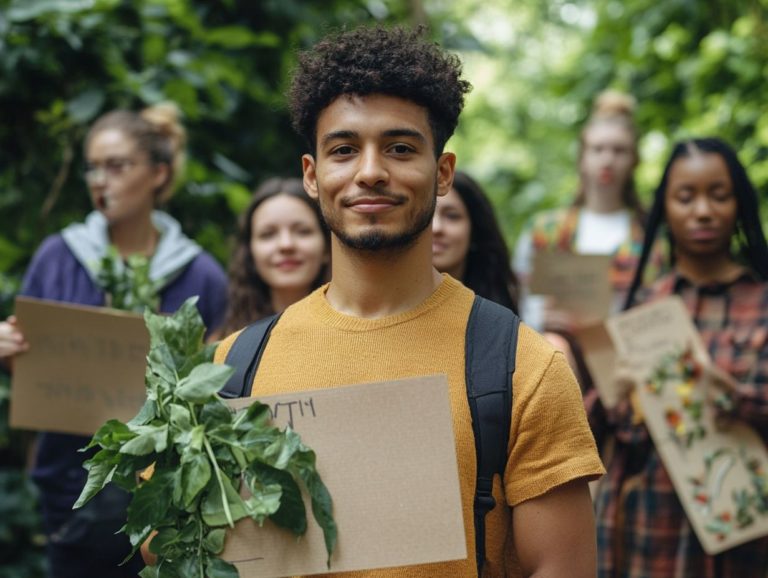The Benefits of Buying Second-Hand Fashion
Second-hand fashion isn t just a trend. It represents a lifestyle choice that promotes sustainability, affordability, and ethics.
By delving into the environmental, economic, and social benefits of purchasing pre-loved garments, you ll discover how your fashion choices can create a positive impact.
This article presents practical tips for unearthing quality pieces and seamlessly integrating them into your wardrobe. This empowers you to adopt a stylish, eco-friendly approach to fashion.
Are you ready to redefine your style sustainably? Let s explore this exciting journey!
Contents
Key Takeaways:
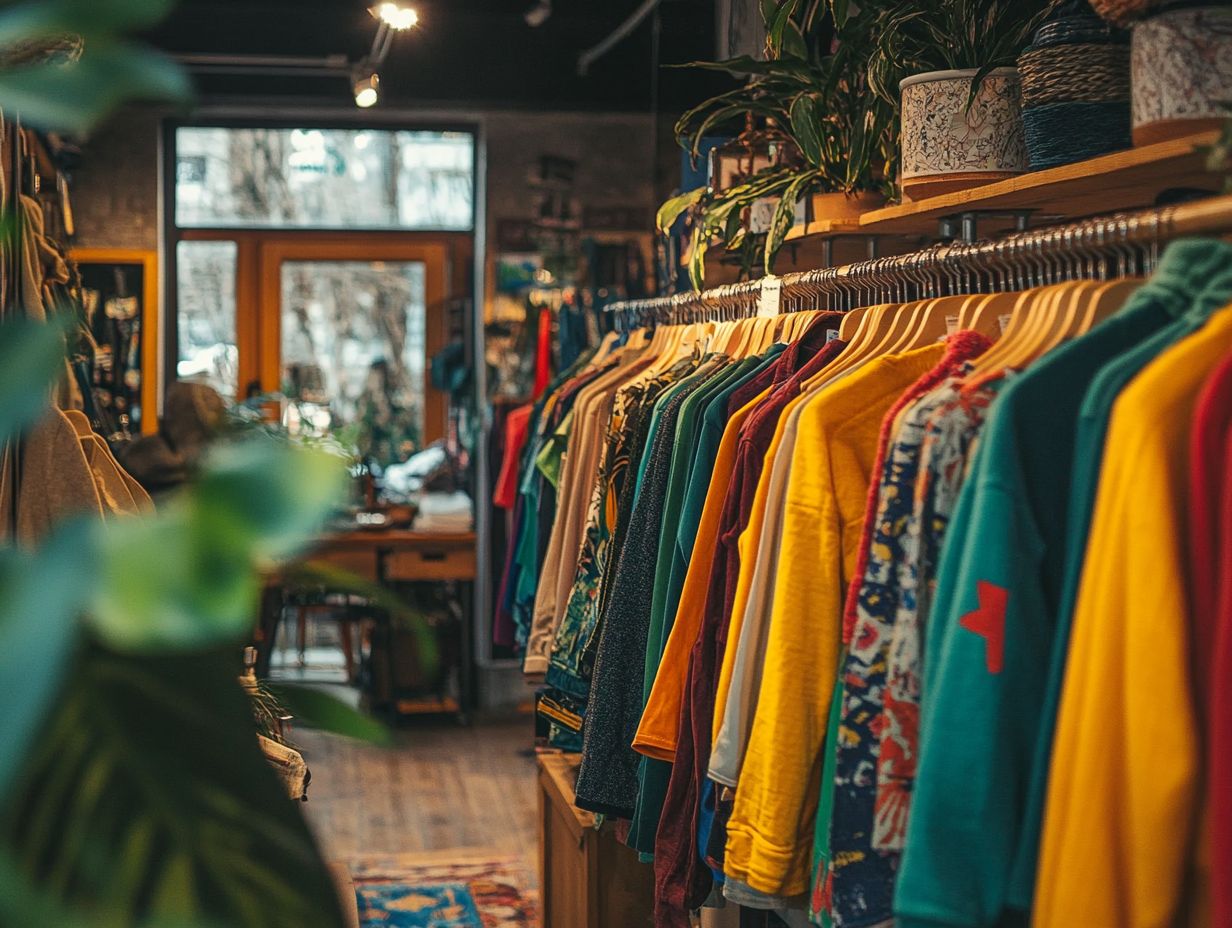
- Buying second-hand fashion helps reduce waste and decrease your carbon footprint.
- It supports local businesses and promotes a circular economy.
- It allows you to express your style while being ethical.
What is Second-Hand Fashion?
Second-hand fashion encompasses the art of acquiring clothing and accessories that have been previously owned. It champions sustainable fashion through the delightful experience of thrift shopping and bolsters local thrift stores.
This journey involves not only unearthing vintage garments and one-of-a-kind treasures in your neighborhood thrift shops but also exploring online marketplaces like The RealReal and ThredUp, where the allure of used luxury clothing has taken center stage.
As you seek alternatives to fast fashion, the movement toward sustainable practices has fostered an increasing appreciation for second-hand clothing, along with the vibrant community that thrives around thrift shopping.
Environmental Benefits of Second-Hand Fashion
The environmental benefits of second-hand fashion are remarkable. They significantly aid in reducing carbon footprints and minimizing pollution linked to the fashion industry.
By opting for secondhand items rather than brand-new ones, you engage in recycling clothing. This plays a vital role in diminishing the overall environmental impact of clothing production and waste. Your choice makes a difference, contributing to a more sustainable future.
Reducing Waste and Carbon Footprint
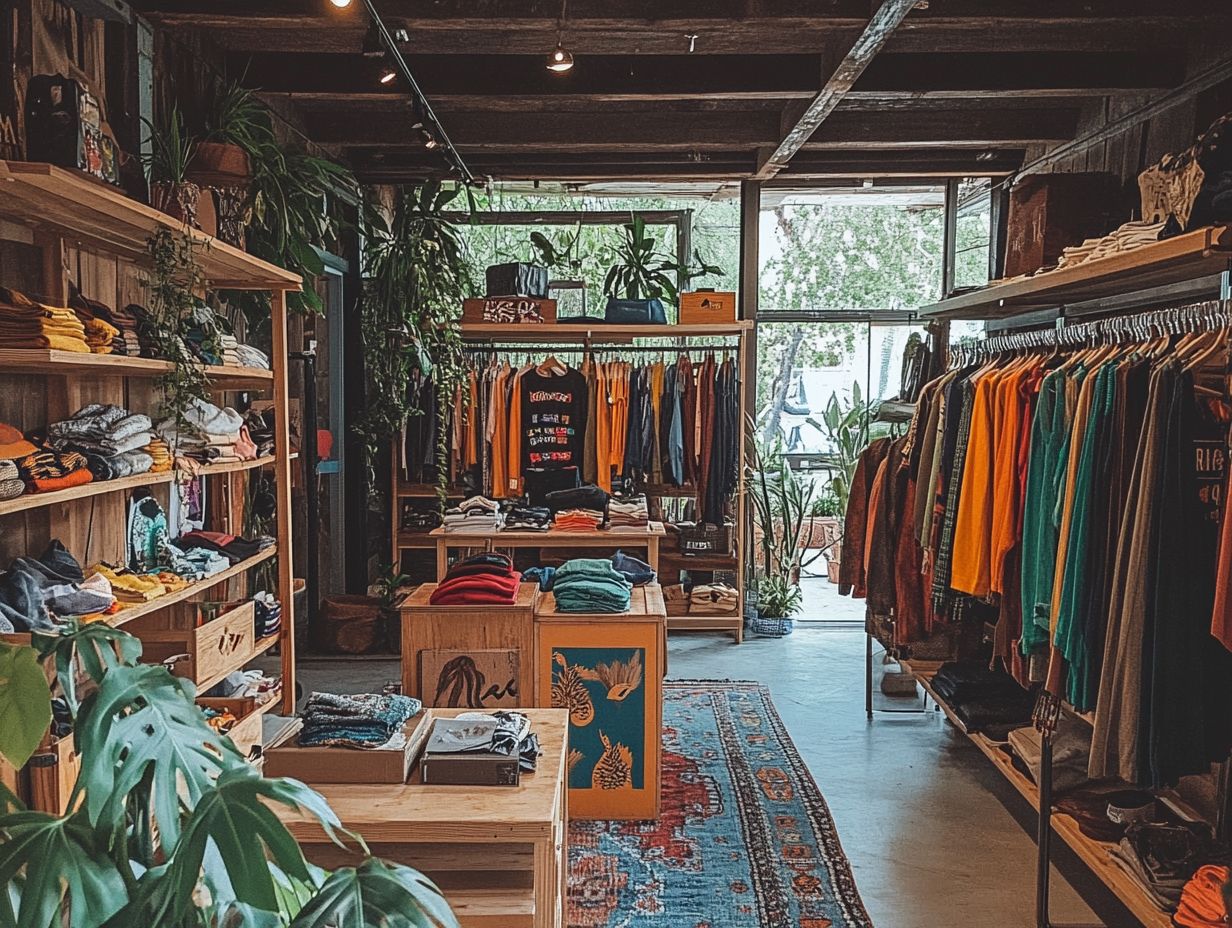
Buying secondhand clothing is not just a trend; it s a powerful way to reduce waste and lower your carbon footprint. This is especially true compared to the detrimental practices of fast fashion brands that wreak havoc on the environment.
Fast fashion is infamous for its voracious appetite for resources. It consumes around 79 billion cubic meters of water every year and contributes to a staggering 10% of global carbon emissions. By opting for thrift shopping, you re not just giving pre-loved items a new lease on life; you re also curbing the demand for new products that inevitably lead to more resource exploitation.
For instance, when you purchase just one secondhand item, you can save approximately 2,700 liters of water the equivalent of what it takes to produce a single cotton T-shirt. Every small choice you make matters, transforming your consumer habits into a sustainable model that actively fights waste and champions a circular economy.
Economic Benefits of Second-Hand Fashion
The economic advantages of second-hand fashion are clear. You get to enjoy significant savings while shopping for affordable, high-end clothing. This grants you access to unique items that may otherwise remain out of reach.
This approach not only enhances your personal wallet but also bolsters local businesses and thrift stores that thrive on community support.
Saving Money and Supporting Local Businesses
Shopping for thrift store clothing not only offers significant savings but also strengthens community support by promoting local businesses that thrive on secondhand sales.
This delightful practice creates a vibrant cycle where your savings can be reinvested into the community, aiding local initiatives and fostering a sense of camaraderie among residents. By choosing to shop at thrift stores, you play a vital role in reducing waste and championing sustainability. This makes your shopping choices both environmentally conscious and economically savvy.
To navigate the world of thrift store shopping effectively, it s beneficial to keep a few best practices in mind:
- Start with a clear idea of what you need.
- Browse during off-peak hours for a more relaxed experience.
- Don t hesitate to try on those unique pieces that catch your eye.
By following these tips, you can make meaningful contributions to your community while scoring some truly amazing deals.
Social Benefits of Second-Hand Fashion
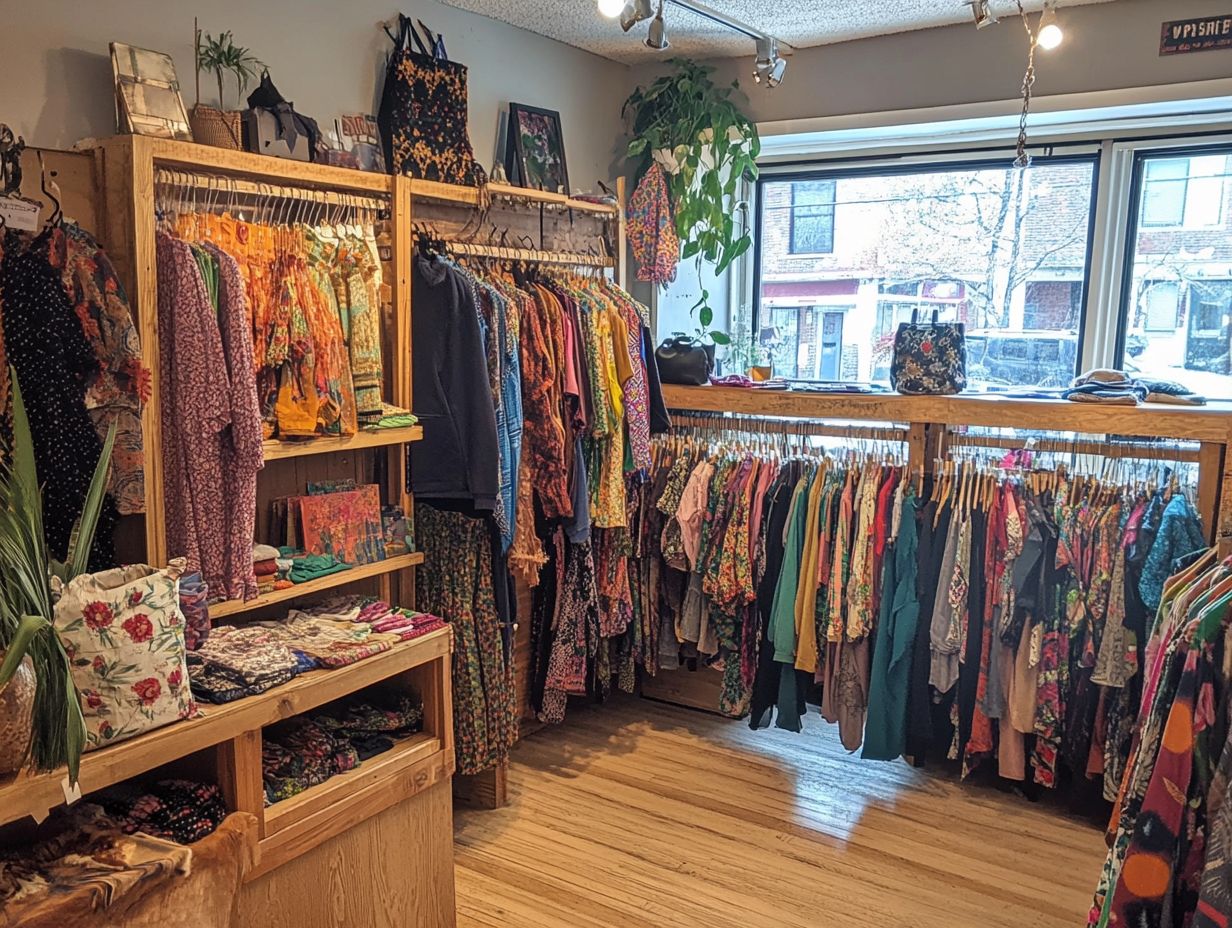
The social benefits of second-hand fashion go beyond just saving money; they foster sustainable and ethical practices that align with your growing desire for responsible consumerism.
By choosing second-hand options, you enhance community support and engagement, contributing to a movement that values both style and social responsibility.
Promoting Sustainable and Ethical Practices
Promoting sustainable and ethical practices through second-hand fashion is essential for nurturing community support and championing the recycling of garments that might otherwise end up as waste.
By engaging with local thrift stores and community initiatives, you can actively contribute to a circular economy that prioritizes reuse over disposal. These stores offer affordable clothing options and also serve as platforms for raising awareness and advocating for sustainable practices.
Consider the impact of local organizations that host clothing swaps or donation drives; they transform how you view your wardrobe. Such community-driven efforts foster a mindset where ethical consumer behavior can thrive. Choosing second-hand garments is not merely about saving a few bucks it s about joining a larger movement toward environmental responsibility.
Tips for Buying Second-Hand Fashion
When you delve into the world of second-hand fashion, it’s crucial to master the art of identifying quality items and steering clear of counterfeits. This knowledge will elevate your thrift shopping experience, allowing you to build a stylish, sustainable wardrobe that stands the test of time.
How to Find Quality Items and Avoid Counterfeits

Finding quality clothes while thrift shopping demands careful attention and a solid understanding of what to seek, especially when diving into vintage garments or browsing online shops.
To effectively evaluate the quality of second-hand items, pay close attention to fabric types like cotton, silk, and wool these often signal durability and comfort. Familiarizing yourself with reputable brands can direct you toward superior craftsmanship.
When navigating platforms such as Etsy, The RealReal, or ThredUp, it’s prudent to read customer reviews and scrutinize seller ratings. Look for clear images and detailed descriptions to ensure you re acquiring an authentic item. Don t hesitate to reach out to sellers with questions about the item s condition; this can provide invaluable insight before you finalize your purchase.
How to Incorporate Second-Hand Fashion into Your Wardrobe
Incorporating second-hand fashion into your wardrobe opens the door to an exhilarating journey where you can skillfully style and blend unique pieces. Jump in now to craft unique, sustainable looks that will make you stand out!
Start thrift shopping today and be part of the change!
Styling and Mixing Second-Hand Pieces
Styling and mixing second-hand pieces, especially those unique gems and vintage clothing, can truly transform your wardrobe into a sustainable fashion statement. Start mixing and matching today for a stylish, sustainable wardrobe!
By blending these unique items with contemporary clothing, you can effortlessly create outfits that reflect your personality while minimizing your environmental footprint. For example, consider pairing a vintage blazer with a simple tee and modern jeans; it not only adds an intriguing layer but also showcases a stylish mix of different styles.
Don’t overlook accessories. Salvaged jewelry or a classic handbag can elevate your look to new heights.
By embracing this creativity, you can explore endless outfit combinations, enabling you to express your unique identity while championing the principles of sustainable fashion.
Common Questions About Second-Hand Fashion
What are the benefits of buying second-hand fashion?
- Affordability: Second-hand fashion is often significantly cheaper than buying brand new, making it a great choice for those on a budget.
- Sustainability: By purchasing second-hand, you are reducing your contribution to the fashion industry’s negative impact on the environment, which helps reduce waste.
- Unique Finds: Second-hand fashion offers a wide variety of styles and pieces, making it easier to find unique and one-of-a-kind items.
- Quality: Many second-hand items, including luxury clothing and vintage garments, are gently used or even brand new, providing you with high-quality clothing at a fraction of the cost.
- Support Local Businesses: Many local thrift stores are small, local businesses that rely on community support. By shopping second-hand, you are helping to support these businesses and their employees, fostering community support and sustainable apparel practices.
